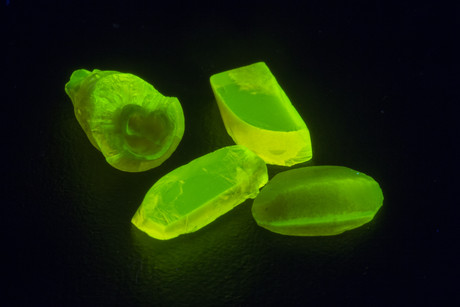Improving data storage for the quantum internet

Scientists at The Australian National University (ANU) have discovered a new way to store quantum data, thus taking a major leap forward to providing the building blocks for a global quantum internet. The team was led by Associate Professor Matthew Sellars, who said improved storage is an important part of a viable quantum internet.
“The effort to build a quantum computer is often described as the space race of the 21st century, but today’s computers didn’t realise their full potential until we had the internet,” said Dr Sellars, who is program manager for the Centre for Quantum Computation and Communication Technology (CQC2T) at ANU.
Writing in the journal Nature Physics, Dr Sellars and his team reveal how to dramatically improve the storage time of a telecom-compatible quantum memory — a challenge that has eluded researchers worldwide. As noted by study co-author Dr Rose Ahlefeldt, also from CQC2T, quantum memory allows scientists to buffer and synchronise quantum information — operations necessary for long-range and ultrasecure encrypted communications.
“At the moment researchers are using memories that don’t work at the right wavelength, and have to employ a complicated conversion process to and from the communications wavelength,” said Dr Ahlefeldt. “This can be inefficient, and means they have to do three very difficult things instead of just one.”
The team used a rare earth element, called erbium, in a crystal to increase the storage time of telecom-compatible quantum memory by 10,000 times compared to previous efforts — long enough to one day send quantum information throughout a global network. Erbium has unique quantum properties and operates in the same bandwidth as existing fibre-optic networks, eliminating the need for a conversion process.
“Our technology … operates in the same 1550 nm band as today’s telecommunications infrastructure, making it compatible with the fibre-optic cables found in existing networks,” noted first author Miloš Rančić, also from CQC2T.
Rančić said the new technology can also be operated as a quantum light source or used as an optical link for solid-state quantum computing devices, connecting them to the quantum internet. He noted, “Our technology can connect with many types of quantum computers including CQC2T’s silicon qubits and superconducting qubits, which Google and IBM are developing.”
Dr Sellars concluded that the erbium-doped crystal is “the perfect material to form the building blocks of a quantum internet that will unlock the full potential of future quantum computers”. It’s a result that’s been worth the wait for him and his team, who originally came up with the idea 10 years ago.
“Many of our peers told us that such a simple idea couldn’t work,” Dr Sellars revealed. “Seeing this result, it feels great to know that our approach was the right one.”
AI spots hidden objects in chest scans
A new artificial intelligence (AI) tool can spot hard-to-see objects lodged in patients'...
Drying biofluid droplets used to diagnose disease
A newly developed workflow relies on the drying process of biofluid droplets to distinguish...
Map of the developing brain opens pathways to treat Parkinson's
The comprehensive single-cell map of the developing human brain captures nearly every cell type,...



